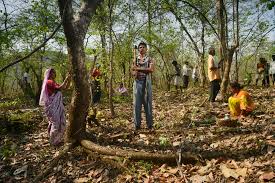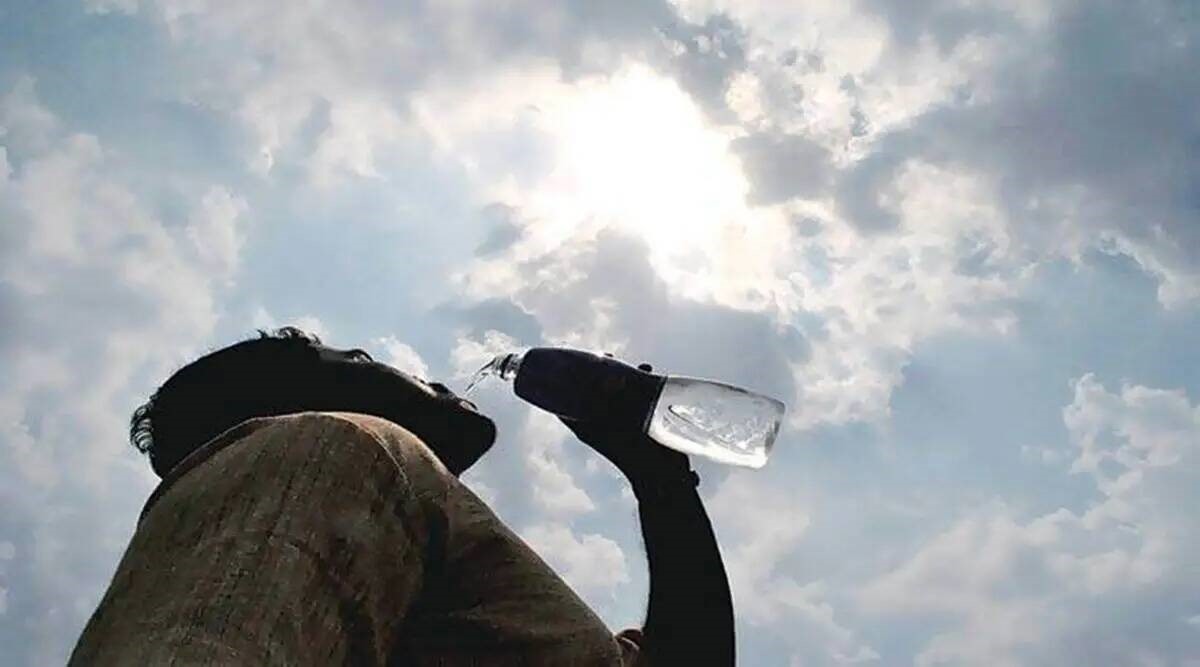Description

Copyright infringement is not intended
Context:
- The authorities started cutting trees in Chhattisgarh’s Hasdeo Aranya forests for the second phase of the Parsa East and Kente Basan (PEKB) coal mining project but had to put the exercise on hold after hundreds of villagers turned up to protest the deforestation in Ghatbarra village.
More on the news:
- Activists claim that the felling of trees in Ghatbarra village was illegal.
- The Ghatbarra forest was given Community Forest Resource (CFR) rights in 2011. Later the CFR rights were cancelled but there is no provision to cancel such conferred rights under the Forest Right Act 2006. The cancellation has been challenged in the high court and is still pending. Hence, the felling of trees is illegal as the issue of CFR has not been finalized yet.
- Hasdeo Arand is one of the largest contiguous stretches of very dense forest in central India spanning 170,000 hectares and has 23 coal blocks.
- In 2009, the environment ministry categorized Hasdeo Arand as a “No-Go” zone for mining because of its rich forest cover but eventually opened it again to mining because the policy hadn’t been finalised.
- Elephants have a significant presence throughout the year, and are an important part of a large migratory corridor.
- Hasdeo Aranya forests are the catchment of Hasdeo River --Mahanadi’s largest tributary- which is critical for perennial river flow. It is also the watershed of Hasdeo Bango reservoir and thus critical for irrigation of 3 lakh hectares double-cropped land in the “rice-bowl” state of Chhattisgarh
- The Chhattisgarh government has become only the second state in the country to recognise Community Forest Resource (CFR) rights of a village inside a national park. The CFR rights of tribals living in Gudiyapadar, a hamlet inside the Kanger Ghati National Park in Bastar district, were recognised, giving the community power to formulate rules for forest use.
What is a community forest resource?
- The community forest resource area is the common forest land that has been traditionally protected and conserved for sustainable use by a particular community.
- The community uses it to access resources available within the traditional and customary boundary of the village; and for seasonal use of landscape in case of pastoralist communities.
- Each CFR area has a customary boundary with identifiable landmarks recognised by the community and its neighboring villages. It may include forest of any category – revenue forest, classified & unclassified forest, deemed forest, DLC land, reserve forest, protected forest, sanctuary and national parks etc.
What are Community Forest Resource rights?
- The Community Forest Resource rights under Section 3(1)(i) of the Scheduled Tribes and Other Traditional Forest Dwellers (Recognition of Forest Rights) Act (commonly referred to as the Forest Rights Act or the FRA) provide for recognition of the right to “protect, regenerate or conserve or manage” the community forest resource.
- These rights allow the community to formulate rules for forest use by itself and others and thereby discharge its responsibilities under Section 5 of the FRA.
- CFR rights, along with Community Rights (CRs) under Sections 3(1)(b) and 3(1)(c), which include nistar rights and rights over non-timber forest products, ensure sustainable livelihoods of the community.
- These rights give the authority to the Gram Sabha to adopt local traditional practices of forest conservation and management within the community forest resource boundary.
Why is the recognition of CFR rights important?
- Aimed at undoing the “historic injustice” meted out to forest-dependent communities due to curtailment of their customary rights over forests, the FRA came into force in 2008.
- It is important as it recognises the community’s right to use, manage and conserve forest resources, and to legally hold forest land that these communities have used for cultivation and residence.
- It also underlines the integral role that forest dwellers play in sustainability of forests and in conservation of biodiversity.
- It is of greater significance inside protected forests like national parks, sanctuaries and tiger reserves as traditional dwellers then become a part of management of the protected forests using their traditional wisdom.
- But while CFR rights are an important empowerment tool, getting a consensus amongst various villages about their traditional boundaries often proves a challenge.
Forest Rights Act:
- The Scheduled Tribes and Other Traditional Forest Dwellers (Recognition of Forest Rights) Act, 2006 is also known as the Forest Rights Act.
- The Forest Rights Act (FRA), 2006 recognizes the rights of the forest-dwelling tribal communities and other traditional forest dwellers to forest resources, on which these communities were dependent for a variety of needs, including livelihood, habitation, and other socio-cultural needs.
- The Act provides certain individual rights such as Rights of Self-cultivation and Habitation and community rights such as grazing, fishing, and access to water bodies in forests, community right to intellectual property and traditional knowledge etc.
- The Act empowers the forest dwellers to access and use the forest resources in the manner that they were traditionally accustomed to, to protect, conserve and manage forests, protect forest dwellers from unlawful evictions, and also provides for basic development facilities for the community of forest dwellers to access facilities of education, health, nutrition, infrastructure, etc.
https://www.hindustantimes.com/india-news/pekb-project-tree-cutting-starts-in-chhattisgarh-forest-paused-after-protests-101653997987675.html
https://indianexpress.com/article/explained/explained-what-are-community-forest-rights-why-do-they-matter-7939921/#:~:text=The%20Community%20Forest%20Resource%20rights,or%20manage%E2%80%9D%20the%20community%20forest
1.png)
















